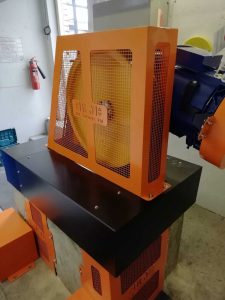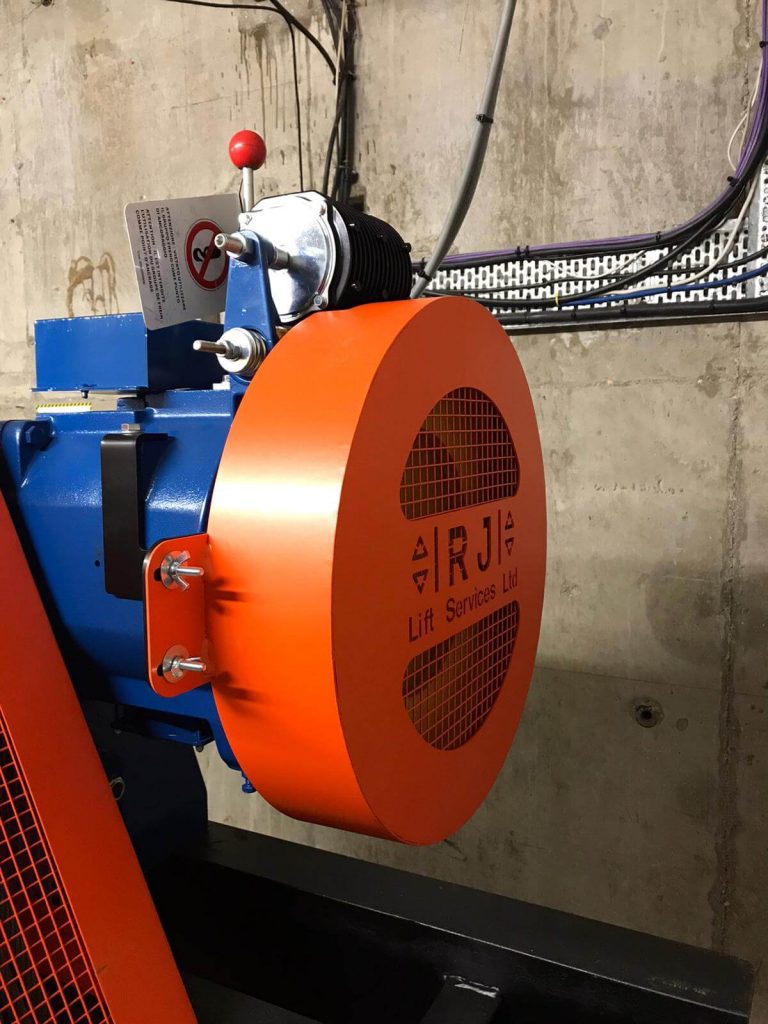Lifts with machine rooms must have guarding on all machinery to safeguard engineers and other people entering the room. While the latest rules on machine guarding may seem far removed or even irrelevant to the running of your office block, retail facility or hotel. But in reality, these new rules could make a real impact on the running of your business. Worse, they could adversely affect your customers’ opinion of your customer service.
For this reason, we’ve put together this guide so that business owners can understand the rules and make appropriate decisions for their business.
Lift regulation basics
You’ll know that having your passenger lift or goods lift out of order, even for short periods can be a major pain point for your business and your customers.
You’ll also know that to comply with legal requirements, your passenger lift needs servicing regularly and must have a valid LOLER certificate.
But you might not know…
But perhaps what you would not be aware of is the fact that the engineers who maintain your lift or who conduct the LOLER testing can be at risk of serious injury while in your machine room or lift shaft. Safeguarding the engineers who have come to service or examine your lift is why these new rules have been brought in.
“the person undertaking the work of examining and maintaining a lift should be able to do so without being exposed to undue risks”
As the owner or person who runs a building, you are, legally, a ‘duty holder’ which means you have responsibilities for those who use and work in the building for which you are responsible. The law makes it very clear that people have a right to work in places where risks to their health are properly controlled. It also makes clear that lift owners (or duty holders) should not assume that their lifts are compliant with the Lifts Directive, Machinery Directive EN81 and UK legislation.

The new rules and how they affect you and your business
On the basis that the new rules are primarily designed to safeguard the engineer who is working on your lift – whether that be a regular service, repair or a thorough examination (LOLER), if the machinery is not fully and properly guarded, the engineer may have to ‘isolate’ the lift in order to work in the machine room.
For you, this means switching the lift off while he/she completes routine tasks.
Let’s explain this further:
Scenario 1:
If the machinery in your lift control room is fully and properly guarded, the engineer can work in the room and on the lift machinery without switching off the lift.
Your lift may need to be isolated or switched off for customer use for a short period, depending on the work required, but this time will be minimised.
Scenario 2:
If your lift does have a guard, but it is not to the latest standards and could be easily bypassed allowing access to dangerous parts of the machinery OR if the guard is not secured and does not require a tool to remove it THEN the machinery MUST be stopped before working within 1.5m of the machinery.
Your lift engineer is duty bound to advise you of the need to install suitable guarding.

Scenario 3:
If there is no machinery guarding at all in your machinery room and dangerous parts of the machinery are exposed, then the risk to the engineer is considered to be dangerous and the machinery MUST be turned off before the engineer is within 1.5m of the machinery.
If the machine room is small, this may mean turning the lift off before entering the machine room. The impact of this scenario is that it could be impossible for the engineer to safely see how the lift is running and make adjustments which could mean the lift is not repaired or serviced as quickly as it might otherwise be.
Again, your lift engineer is duty bound to advise you of the need to install suitable guarding.

The effects on your business
In both Scenario 2 and 3, in order to safeguard your lift engineer, the lift may need to be isolated (switched off) before the engineer can start work. This will inevitably mean that your lift will be out of action for your customers, staff or goods for a longer period, which may cause inconvenience to you, your customers and staff, depending on the nature of your business.
But my machinery is behind a locked door!
Securing machinery behind a locked door is obviously good for guests, customers and staff so that unnecessary injuries are avoided. However, a locked door is considered insufficient by law because once inside the room, even trained and experienced lift technicians are at risk while they are inspecting and maintaining the lift machinery.
But my lift is really old
Your lift generally has to comply with the regulations that were in place when your lift was installed. However, if the machinery is considered dangerous by your LOLER inspector, he/she will recommend that it is guarded.
Our Advice
If your lift engineer or your LOLER inspection recommends that your lift machinery guarding is inadequate, talk to your lift servicing company about a quotation for machinery guarding.
Look at it as an investment
Having your lift running well with minimum downtime is of considerable benefit to your business so it is worth looking at machine guarding as an investment in your customer service.
The regulations which apply to lifts and machine guarding
- Health and Safety at Work etc Act 1974
- Lifting Operations and Lifting Equipment Regulations 1998 (LOLER) – safe operation of the lift, rather than inspection and maintenance
- Provision and Use of Work Equipment Regulations (PUWER) – the way in which workers use and interact with the lift
- EN81:20 – machine guarding
- BS EN ISO 12100:2010 – general principles for machine design. Risk assessment and risk reduction.
- BS EN ISO 14120:2015 – general requirements for the design and construction of fixed and movable guards
- BS EN ISO 13857:2008 – safety distances to prevent hazard zones being reached by upper and lower limbs
Regulatory requirements for machine guarding
All guards must:
- be suitable for the purpose for which they are provided
- be of good construction, sound material and adequate strength
- be maintained in an efficient state, in efficient working order and in good repair
- not give rise to any increased risk to health or safety
- not be easily bypassed or disabled
- be situated at sufficient distance from the danger zone
- not unduly restrict the view of the operating cycle of the machinery, where such a view is necessary
- be so constructed or adapted that they allow operations necessary to fit or replace parts and for maintenance work, restricting access so that it is allowed only to the area where the work is to be carried out and, if possible, without having to dismantle the guard or protection device.
Definitions
The Term ‘danger zone’ means any zone in or around machinery in which a person is exposed to a risk to health or safety from contact with a dangerous part of machinery or a rotating stock-bar.
The term ‘dangerous part’ has been established in health and safety law through judicial decisions. In practice, this means that if a piece of work equipment could cause injury if it is being used in a foreseeable way, it can be considered a dangerous part.
If you need advice…
If you need advice on any of the above, please contact us.
You might also want to visit our lift refurbishment page for more information.






